How to Grow Strawberries: Sweet Tips for Juicy Success
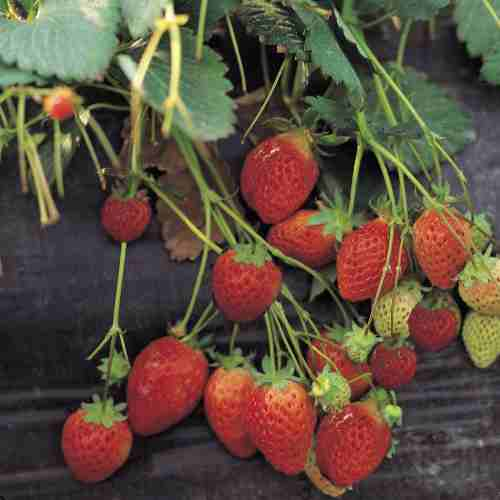
Growing strawberries is like planting happiness in your garden—nothing beats the joy of biting into a sun-warmed berry you grew yourself. Whether you want a garden full of berries for fresh snacking, homemade jams, or baking the ultimate strawberry shortcake, this guide will help you grow strawberries like a pro.
Let’s dig in (pun intended)!
Get our Gardening Buddy and find veggies that fit your conditions best.
You Can Grow It!
Why Grow Strawberries?
Strawberries are nature’s candy, loaded with antioxidants, vitamin C, and fiber. They’re also a magnet for kids, pollinators, and anyone who appreciates fresh, flavorful fruit.
Store-bought strawberries often pale in comparison to homegrown ones, which are sweeter, juicier, and don’t require a trip to the grocery store.
The best part? Strawberries are relatively easy to grow, whether you have a sprawling garden, a balcony, or even just a few pots.
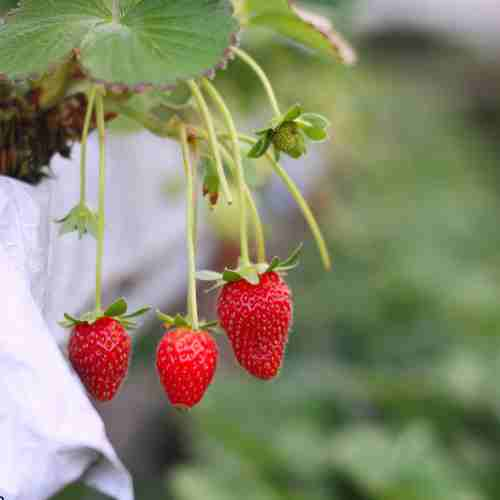
Types of Strawberries: Pick Your Perfect Plant
Before planting, you’ll need to decide what type of strawberry suits your needs:
- June-bearing strawberries: These are the superstars of the strawberry world, producing a large, concentrated harvest in late spring to early summer. Perfect if you want a big batch for preserving.
- Everbearing strawberries: These plants give you smaller harvests multiple times a year, usually in spring, summer, and fall. Great for ongoing snacking.
- Day-neutral strawberries: The overachievers! They produce fruit continuously throughout the growing season, regardless of day length. Ideal for container gardening.
Pro tip: Plant a mix of varieties to enjoy strawberries all season long.
Step 1: Choosing the Right Spot for your Strawberries
Strawberries are sun lovers, so choose a spot that gets at least 6–8 hours of direct sunlight daily. More sun equals sweeter berries!
If space is tight, don’t worry—strawberries are perfectly happy in containers, hanging baskets, or vertical gardens. They’re versatile and adorable, no matter where they grow.
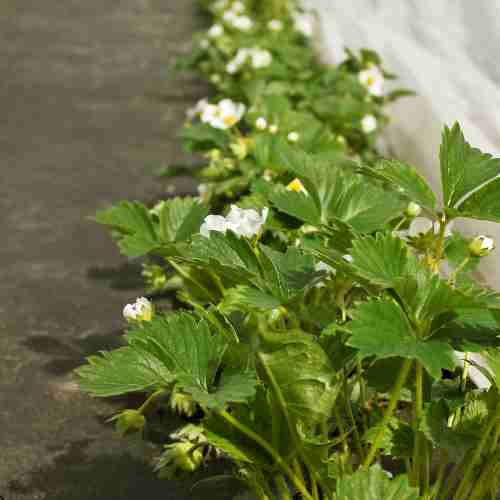
Step 2: Preparing the Soil for your Strawberries
Strawberries are picky about their soil, but a little prep goes a long way. Here’s how to set the stage:
- Test the pH: Strawberries prefer slightly acidic soil, around 5.5–6.8. Test kits are inexpensive and will save you a lot of guesswork.
- Enrich the soil: Add compost or well-rotted manure to improve fertility and drainage. Strawberries like nutrient-rich soil that doesn’t get waterlogged.
- Clear the area: Remove weeds, rocks, and debris. Strawberries hate competition, and weeds can steal precious nutrients.
Step 3: Planting Strawberries
When it’s time to plant, timing and technique matter.
When to Plant:
- For bare-root plants, plant them in early spring as soon as the ground is workable.
- If you’re in a warmer climate, fall planting works too.
How to Plant Strawberries:
- Dig a hole deep enough to fit the roots without bending them.
- Place the plant so the crown (where the leaves meet the roots) sits just at soil level. Too deep, and it may rot; too shallow, and the roots may dry out.
- Space plants about 12–18 inches apart to allow for runners and airflow. Rows should be 2–3 feet apart.
- Water thoroughly after planting.
Pro tip: Mulch around your strawberries to retain moisture, suppress weeds, and keep the fruit off the soil. Straw or pine needles work wonders!
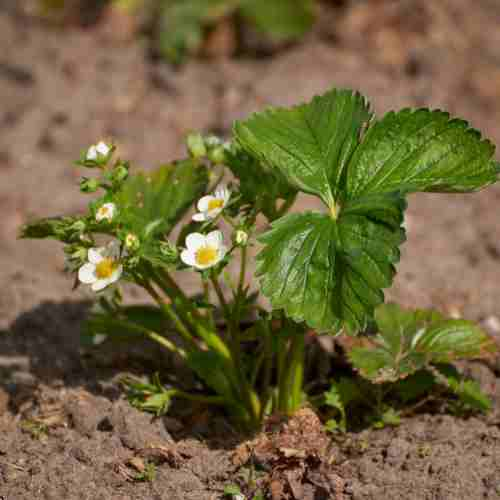
Step 4: Watering and Feeding Your Strawberries
Strawberries are thirsty little plants, but they don’t like soggy feet.
- Watering: Keep the soil consistently moist but not waterlogged. Water early in the day to prevent diseases caused by wet leaves overnight.
- Fertilizing: Feed your plants with a balanced fertilizer when you first plant them. After the initial fruiting, use a fertilizer low in nitrogen to encourage more fruit and less leafy growth.
Step 5: Protecting Strawberries from Pests and Problems
Strawberries are irresistible, not just to you but to pests, too. Here’s how to protect your crop:
- Birds: Cover your plants with bird netting unless you’re okay with sharing. (Spoiler: Birds don’t believe in moderation.)
- Slugs and snails: Use crushed eggshells or copper tape around your plants to deter these slimy invaders.
- Gray mold: This fungal disease thrives in wet conditions. Avoid overhead watering and space plants properly to improve airflow.
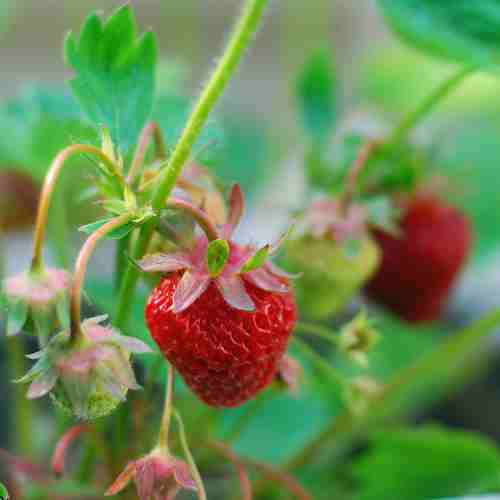
Step 6: Harvesting Strawberries
Patience, my friend—strawberries are worth the wait! They’re ready to harvest when they’re fully red, plump, and fragrant. Gently twist the berry off the stem, leaving a bit of green cap attached.
Pro tip: Don’t wash strawberries until you’re ready to eat them—moisture can make them spoil faster.
Step 7: Caring for Your Strawberry Patch
Strawberries are perennial plants, meaning they’ll come back year after year with a little TLC:
- Remove runners: Unless you’re trying to propagate new plants, trim back runners (long stems with baby plants) to focus the plant’s energy on fruit production.
- Renovate after harvest: For June-bearing varieties, mow or trim the foliage down to 1–2 inches after the main harvest. This encourages fresh growth.
- Mulch for winter: If you live in a cold climate, add a thick layer of mulch to protect your plants from freezing temperatures.
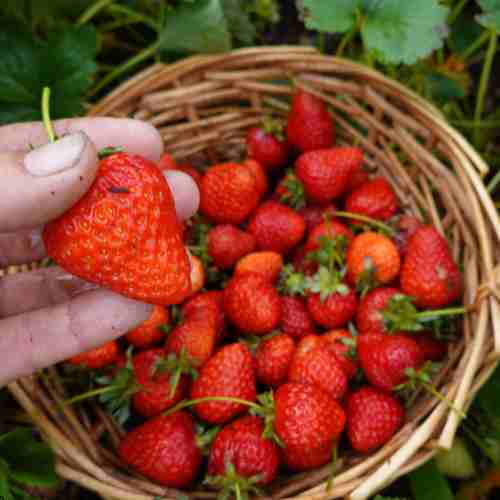
Step 8: Storing and Using Strawberries
Strawberries are best enjoyed fresh, but if you have a bumper crop, don’t let them go to waste!
Storage Tips:
- Keep unwashed strawberries in the fridge for up to 5 days.
- Freeze berries on a baking sheet, then transfer them to a freezer bag for smoothies or desserts later.
How to Use Strawberries:
- Toss them in salads for a sweet twist.
- Blend them into smoothies or milkshakes.
- Make jam, syrup, or even strawberry wine (yes, that’s a thing).
- Top your desserts or cereal with fresh slices for a pop of flavor.
FAQs About Growing Strawberries
How long do strawberries take to grow?
From planting to harvest, strawberries usually take about 4–6 weeks to produce fruit, depending on the variety and growing conditions.
Can I grow strawberries indoors?
Yes! Day-neutral or everbearing varieties are great for indoor gardening. Just ensure they get enough sunlight or use a grow light.
Do strawberry plants come back every year?
Yes, strawberries are perennial, but their productivity decreases after 3–4 years. Replace older plants with runners or new plants to keep your patch thriving.
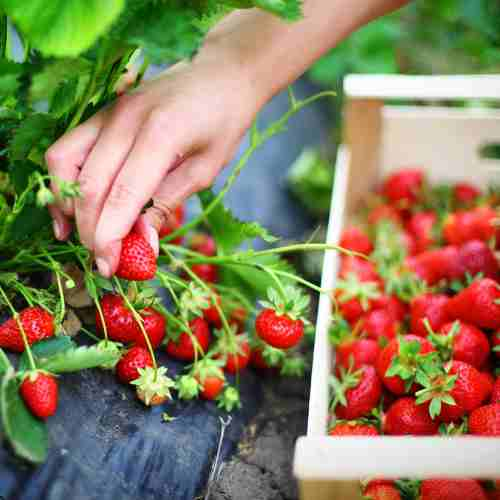
Final Thoughts: Sweet Success in Every Bite
Growing strawberries is a rewarding experience that turns your garden (or balcony) into a berry paradise. With proper care, these plants will reward you with sweet, juicy fruit year after year.
So, grab your gardening gloves, pick your favorite variety, and get ready to enjoy the sweetest fruits of your labor. Because let’s face it—life’s better with strawberries! 🍓
Get our Gardening Buddy and find veggies that fit your conditions best.
You Can Grow It!
Partners and Sponsors
We are forever grateful to our partners and sponsors. Send an email to team @ strongecho.com and let’s see how we can grow each other’s impact!





